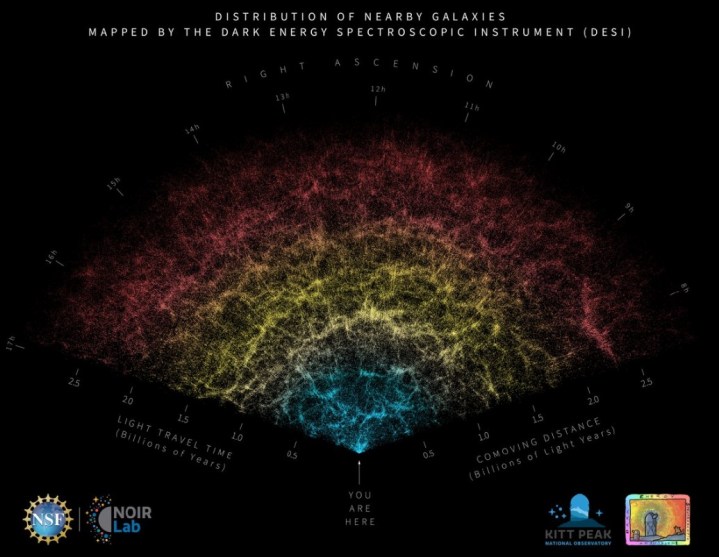New results from a survey into dark energy show a look back 11 billion years into the past, revealing the locations of tens of thousands of galaxies in the largest ever 3D map of the universe. The results from the Dark Energy Spectroscopic Instrument Survey, or DESI, were released this week and show how the universe has expanded over billions of years.
The results so far are shown in a 3D map covering 600,000 galaxies, though incredibly this data is just 0.1% of the total volume of the full survey. The results have been plotted to show how galaxies appear to be moving away from us as the universe expands, with light that has traveled the furthest represented in red, referring to the most distant galaxies, and nearer galaxies represented in blue.

There is also a zoomable version of the map which lets you see the thousands of individual points of light, each of which represents a galaxy.
The DESI team has set a new standard for studies of large-scale structure in the Universe,” said Pat McCarthy, Director of NOIRLab, in a statement. “These first-year data are only the beginning of DESI’s quest to unravel the expansion history of the Universe and they hint at the extraordinary science to come.”
Studying the locations of galaxies helps to understand how the universe has expanded through its lifetime, which is driven by dark energy. The expansion of the universe is known to be accelerating over time — faster than seems possible given the conditions of the universe as we know them — and dark energy is the hypothetical force driving this expansion.
“This project is addressing some of the biggest questions in astronomy, like the nature of the mysterious dark energy that drives the expansion of the Universe,” says Chris Davis, NSF program director for NOIRLab. “The exceptional and continuing results yielded by the NSF Mayall telescope with DOE DESI will undoubtedly drive cosmology research for many years to come.”
The results from the first year of DESI data are particularly intriguing because they suggest that dark energy could change over time. Though the data is too new to say for certain, it appears that dark energy may not be constant but could become stronger or weaker over long periods of time.
“We’re incredibly proud of the data, which have produced world-leading cosmology results,” said Michael Levi, DESI director and LBNL scientist. “So far we’re seeing basic agreement with our best model of the Universe, but we’re also seeing some potentially interesting differences that could indicate dark energy is evolving with time.”



